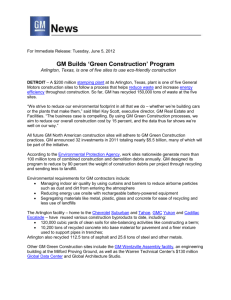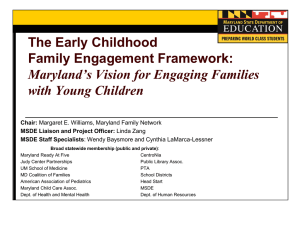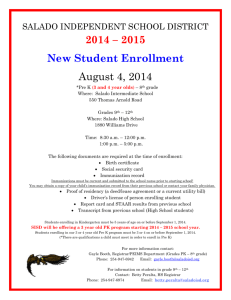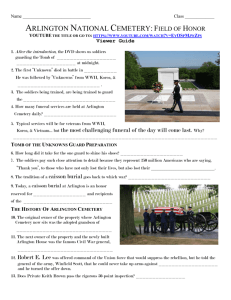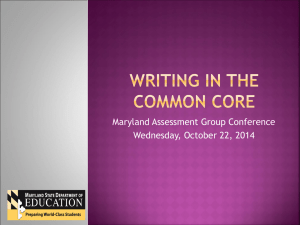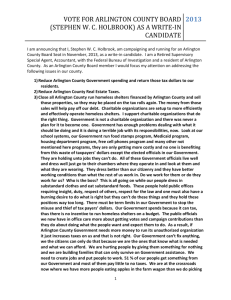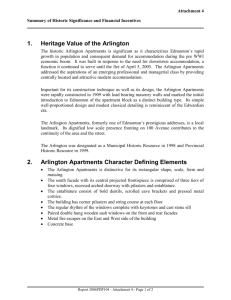Enrolling Your Children in School
advertisement
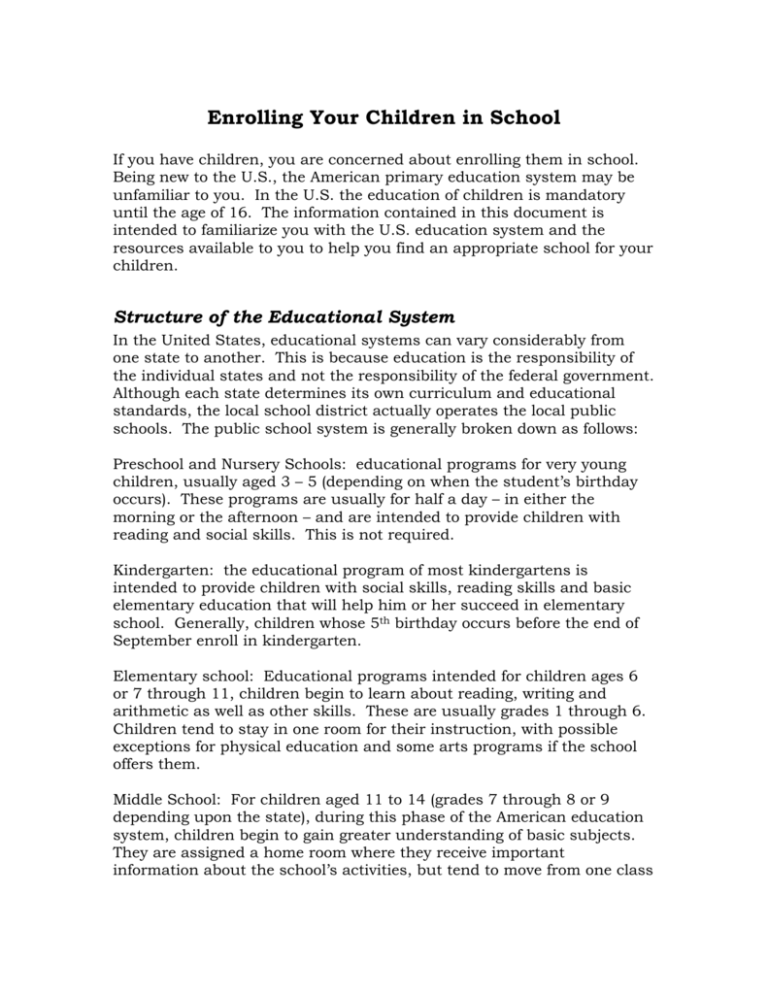
Enrolling Your Children in School If you have children, you are concerned about enrolling them in school. Being new to the U.S., the American primary education system may be unfamiliar to you. In the U.S. the education of children is mandatory until the age of 16. The information contained in this document is intended to familiarize you with the U.S. education system and the resources available to you to help you find an appropriate school for your children. Structure of the Educational System In the United States, educational systems can vary considerably from one state to another. This is because education is the responsibility of the individual states and not the responsibility of the federal government. Although each state determines its own curriculum and educational standards, the local school district actually operates the local public schools. The public school system is generally broken down as follows: Preschool and Nursery Schools: educational programs for very young children, usually aged 3 – 5 (depending on when the student’s birthday occurs). These programs are usually for half a day – in either the morning or the afternoon – and are intended to provide children with reading and social skills. This is not required. Kindergarten: the educational program of most kindergartens is intended to provide children with social skills, reading skills and basic elementary education that will help him or her succeed in elementary school. Generally, children whose 5th birthday occurs before the end of September enroll in kindergarten. Elementary school: Educational programs intended for children ages 6 or 7 through 11, children begin to learn about reading, writing and arithmetic as well as other skills. These are usually grades 1 through 6. Children tend to stay in one room for their instruction, with possible exceptions for physical education and some arts programs if the school offers them. Middle School: For children aged 11 to 14 (grades 7 through 8 or 9 depending upon the state), during this phase of the American education system, children begin to gain greater understanding of basic subjects. They are assigned a home room where they receive important information about the school’s activities, but tend to move from one class room to another during the course of their day to study different subjects. High School: Depending upon the school system, high school might cover grades 9 – 12 or 10-12. Students aged 14 - 18 begin to specialize their studies, focusing on either gaining technical skills or preparing for university study. Types of Schools Public Schools: These neighborhood schools are run by the local school district and are funded by the state through money collected as taxes. Students are assigned to a particular public school based simply on where the student lives. Education in the public schools is free to residents in the school district and, as a result, class sizes tend to be a bit larger than in private schools. Transportation to and from school may be provided if the student does not live within walking distance and the city or municipality does not provide adequate public transportation. The curriculum is determined by the state Department of Education and the teachers, for the most part are licensed and credentialed. Private Schools: These schools are run by private organizations or religious groups. They do not receive any public funding and typically must charge parents tuition for each child attending the school. Most of these schools are selective in their admission criteria and offer smaller class sizes. Many do not offer transportation. Instructors do not need to be credentialed. Parochial schools are private schools usually run by a religious organization. Charter Schools: A type of public school that generally offers a more innovative approach to teaching than the traditional public school. Typically, charter schools are created when specific needs of a set of students are not being met in the traditional public school. Instruction at the school is designed to meet those needs. Although they must meet state academic guidelines, the school determines its curriculum and chooses its own teachers. The quality of instruction can vary considerably. If you consider sending your children to a charter school, it is advisable to visit the school and interview the principal (headmaster) to determine what areas of instruction are promoted by the school, how they approach discipline at the school; the qualifications of the teachers; the qualifications of the school’s management, etc. Magnet Schools: These schools are also run by the local school district, but are more focused that the traditional neighborhood school. For example, one magnet school might focus on math and science while another might focus on art or music or, perhaps, a specific cultural approach to teaching. Deciding which School is the most Appropriate There are many factors to be considered when choosing a school for your child: 1. What kind of instruction do you want your child to have? Do you have any particular cultural or religious needs that must be factored into this decision? 2. Quality of instruction: what is the reputation of the school when it comes to the curriculum? 3. How far does your child have to travel to get to school? How will they do this? Does the school provide a bus? Do you live close enough for your child to walk? Do you have to drive your child to and from school each day? 4. What programs does the school offer? If your child has a talent for art or music, does the school offer these programs? Does the school offer before- or after-school programs in which your child could participate? What about sports? Foreign languages? 5. Does your child have any special needs (for example, trouble seeing or hearing or maybe he or she is in a wheel chair)? Can the school provide the type of instruction needed for your child to learn? 6. If your child needs help learning English, does the school offer some help with this? 7. How safe is the school? Take the time to think carefully about these questions. Your answers will help you determine your ideal school for your child. Choosing the School One of the first things you will need to do is to locate potential schools for your child. A useful website for locating nearby schools is: www.greatschools.net This site also has useful information about choosing schools, what to look for, etc. If possible, take the time to visit the school. Review the checklist on the greatschools.net website for useful tips on what to look for when visiting a school. Maryland Maryland’s Department of Education maintains a website with information about the schools in the state of Maryland: http://www.marylandpublicschools.org/msde From this website you can navigate through a series of links to find information on the Charter schools as well as non-public schools in the state. Additional information is available on home schooling as well. Each county maintains its own schedule for registration and the start of classes, vacations, etc. For information about enrolling your children in public schools, you will need to go to the website for the county in which the school is located. The following link will take you to a listing of the counties in Maryland and provide direct links to the county school system. http://www.marylandpublicschools.org/MSDE/schoolsystems/System_Links_ County.htm Look for information on the registration process as well as any links to an office within the school system that helps international students enroll in school. They will assist in evaluating your child’s educational placement and often provide a wide array of services that can make the transition to school easier. You must contact these offices before you register your children in once of the county’s public schools. MONTGOMERY COUNTY International Student Admissions Office Montgomery County Public Schools Rocking Horse Road Center 4910 Macon Road Rockville, MD 20852 301-230-0686 PRINCE GEORGES COUNTY International Student Guidance Office Judy Hoyer Family Learning Center 8908 Riggs Road Adelphi, MD 20783 Virginia The Virginia Department of Education Each county maintains its own schedule for registration and the start of classes, vacations, etc. For information about enrolling your children in public schools, you will need to go to the website for the county in which the school is located. The following link will take you to a listing of the counties in Virginia and provide direct links to the county school system. http://www.pen.k12.va.us/Div/#Schl Arlington Public Schools - 1426 N. Quincy Street - Arlington, VA 22207 - 703.228.60 ARLINGTON Arlington Public Schools 1426 North Quincy St. Arlington, VA 22207 Tel. 307 228.6000 FAIRFAX Office of Student Services Student Registration 2831 Graham Rd Falls Church, VA 22042 Tel. 703-876-5232 School Information Center: (703) 228-7660 To schedule Appointment: (703) 876-5240 Washington, D.C. For information about enrolling your children in public schools, you will need to go to the website for the Washington D.C. Public School System: http://www.k12.dc.us/dcps/home.html To locate the school nearest you, scroll down to the bottom of the web page until you get to the section on “DCPS Schools and Info.” This section allows you to find the public school nearest you and provides information on the registration process. Once you’ve located the school where you wish your child to attend, you should complete the school’s registration form. In addition, you will be asked to complete a Home Language Survey Form. The school will refer you to the Intake and Assessment division of the Office of Bilingual Education for assessment and placement. Remember, begin first with the school where your child will attend. WASHINGTON, D.C. Office of Bilingual Education 13th and Upshur Streets, NW 3rd Floor Washington, DC 20011 Tel. (202) 576-8850 Once your Child is Enrolled Once your child is enrolled in school, it is important for parents to be aware of what is going on at the school. You may at some point wish to discuss a problem with your child’s teacher or with the administrative staff of the school. At the start of each school year, it is important to know who to contact. Find out the following information: School’s Telephone number: Name of the School Secretary: Name f the Principal: Email address of Principal: School web site address: Teacher Name, email address and voice mail telephone numbers, if available
